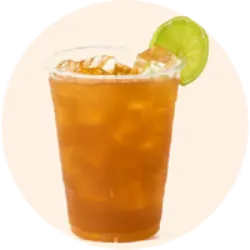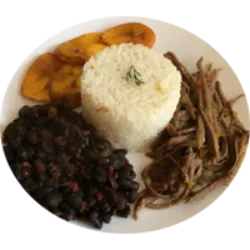María Lionza, originally known as Yara

María Lionza, originally known as Yara, was an indigenous princess born in 1535 in the state of Yaracuy. His birth predicted a sacrifice due to specific characteristics, but his father hid it. Upon escaping, she attracted the Great Anaconda, leading to a tragedy that flooded the village and drowned the tribe. A famous statue of María Lionza in Caracas cracked in 2004, sparking superstitions. Her figure persists in Venezuelan folklore as a strong and powerful woman.
The Venezuelan legend of Sayona tells the story of Melisa, a woman who

The Venezuelan legend of Sayona tells the story of Melisa, a woman who, deceived by a malicious spy, falsely believed in her husband's infidelity. Consumed by jealousy, she set fire to the house with her husband and baby. When confronting her mother about the alleged infidelity, Melisa attacked her to death. Before she died, her mother condemned her. Legend has it that Sayona, often depicted as a seductive woman, haunts men, revealing her horrible appearance after seducing them, leading them to death or terror.
Test yourself with one of these challenges 👇
Discover some interesting facts about Venezuela Tourism
Papelón with lemon

Papelón with lemon is a traditional and refreshing drink from Venezuelan cuisine. This delicious mixture combines a sweet and fresh flavor, made with papelón (hardened sugar cane paste), lemon and water. Served cold, it is an ideal option to quench your thirst on hot days or as an accompaniment to meals. Additionally, it can be enhanced with mint or ginger for an extra touch of flavor and freshness. Papelón with lemon is a natural and healthy alternative, rich in nutrients and with an irresistible balance between sweet and acid.
Chicha

Chicha is a traditional fermented drink of the indigenous people of the Andes and Latin America, dating back to the Inca Empire. Prepared mainly with corn, but also with other cereals, such as quinoa, peanuts and cassava, chicha has several regional variations. The most common version, called chicha de jora, was used ritualistically by the Incas. The term "chicha" has debated origins, and may come from Taíno or Kuna, meaning "corn". Chicherias, places where the drink was consumed, were often illegal family establishments. Chicha is served in specific containers, such as caporal or qero, with different traditions in different regions.
Arepa is a traditional delicacy from Bolivia, Colombia, Panama and Venezuela

Arepa is a traditional delicacy from Bolivia, Colombia, Panama and Venezuela, made with ground corn dough or pre-cooked corn flour. Originating from the indigenous cuisine of these countries, the arepa is a gastronomic icon in Colombia and Venezuela, and is also appreciated in the Canary Islands and Madeira due to Venezuelan migration.
Pabellón Criollo is a traditional Venezuelan dish, considered the national dish

Pabellón Criollo is a traditional Venezuelan dish, considered the national dish, which incorporates influences from indigenous, Spanish and African cultures from colonial times. Composed of rice, shredded meat in stew and cooked black beans, the dish has variations, such as additions of tajadas (fried banana) or fried egg, each receiving specific designations. Additionally, people can customize the dish with ingredients such as sugar in the beans, palmita cheese or hot sauce. The shredded meat can be replaced with chigüire, alligator meat or freshwater fish, depending on regional preferences, time of year or personal taste.
Laguna de la Restinga National Park, on Isla Margarita, Venezuela

Laguna de la Restinga National Park, on Isla Margarita, Venezuela, is an area of international wetland importance, with a vast salt lagoon surrounded by mangroves and canals. Established in 1974, it covers a diversity of ecosystems, including mangroves, thorn forests and shrubs. The lagoon is home to several marine species, while birds such as scarlet ibises, frigatebirds and flamingos are common. The park offers boat trips through the canals and mangroves, allowing tourists to explore its natural beauty and enjoy a gastronomic experience with fresh fish fried on a shell beach.
HOME


